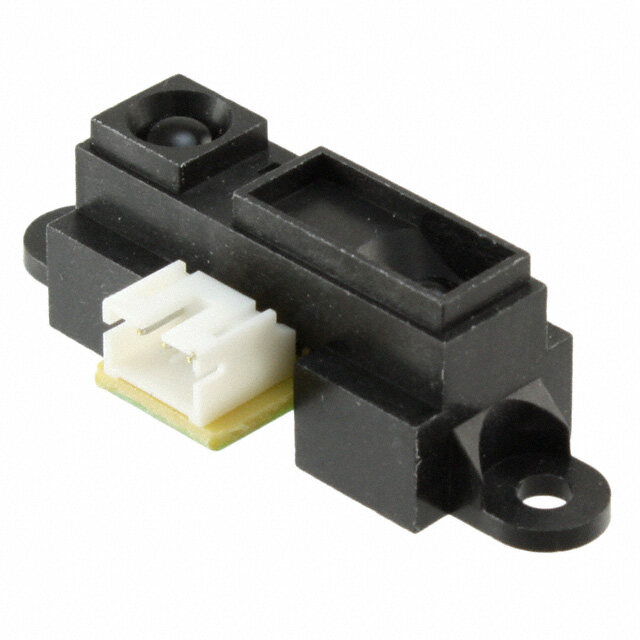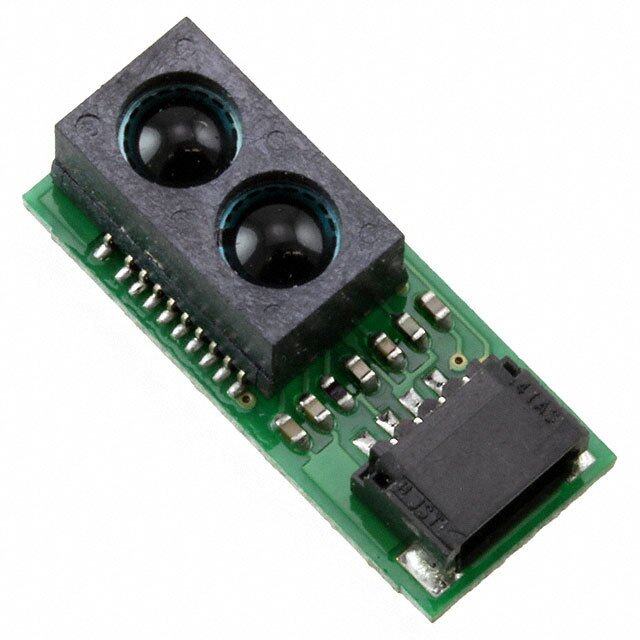ICGOO在线商城 > 传感器,变送器 > 光学传感器 - 测距 > GP2Y0E03
- 型号: GP2Y0E03
- 制造商: Sharp Microelectronics
- 库位|库存: xxxx|xxxx
- 要求:
| 数量阶梯 | 香港交货 | 国内含税 |
| +xxxx | $xxxx | ¥xxxx |
查看当月历史价格
查看今年历史价格
GP2Y0E03产品简介:
ICGOO电子元器件商城为您提供GP2Y0E03由Sharp Microelectronics设计生产,在icgoo商城现货销售,并且可以通过原厂、代理商等渠道进行代购。 GP2Y0E03价格参考¥45.95-¥126.38。Sharp MicroelectronicsGP2Y0E03封装/规格:光学传感器 - 测距, Optical Sensor 4 ~ 50cm I²C, Analog Output。您可以下载GP2Y0E03参考资料、Datasheet数据手册功能说明书,资料中有GP2Y0E03 详细功能的应用电路图电压和使用方法及教程。
SHARP/Socle Technology的GP2Y0E03光学传感器 - 测距是一款用于非接触式距离测量的红外测距传感器。它广泛应用于各种需要精确距离检测的场景,以下是其主要应用场景: 1. 机器人导航与避障 GP2Y0E03常用于机器人技术中,特别是在自主移动机器人(AMR)和无人驾驶车辆中。它可以实时检测前方障碍物的距离,帮助机器人进行路径规划和避障操作。通过安装多个传感器,机器人可以构建周围环境的三维地图,确保安全行驶。 2. 智能家居设备 在智能家居系统中,GP2Y0E03可用于智能门锁、自动门、智能灯具等设备中。例如,当有人靠近时,传感器可以触发自动开灯或开门功能;离开时则自动关闭,提升用户体验的同时节省能源。 3. 工业自动化 该传感器在工业自动化领域也有广泛应用。例如,在生产线上的物料输送系统中,GP2Y0E03可以检测物体与传送带之间的距离,确保物料正确放置并避免碰撞。此外,它还可以用于自动化仓储系统中的货物堆放高度检测,确保仓库空间得到充分利用。 4. 医疗设备 在医疗设备中,GP2Y0E03可用于辅助诊断和治疗设备中。例如,在一些康复训练设备中,传感器可以监测患者与设备之间的距离,确保训练过程的安全性和有效性。此外,它还可以用于手术机器人中,帮助医生更精确地控制手术器械的位置。 5. 消费电子 在消费电子产品中,GP2Y0E03可用于手势识别和用户交互。例如,在智能电视或投影仪中,用户可以通过手势控制设备,而无需使用遥控器。传感器可以检测手部与设备之间的距离,从而实现精准的手势识别。 6. 安防监控 GP2Y0E03还可以用于安防监控系统中,作为入侵检测的一部分。通过设置警戒区域,传感器可以检测是否有物体进入设定范围内,并及时发出警报,增强安防系统的反应速度和准确性。 总之,GP2Y0E03凭借其高精度、稳定性和易用性,成为众多应用领域的理想选择,尤其适合需要实时、非接触式距离测量的场合。
| 参数 | 数值 |
| 产品目录 | |
| 描述 | SENSOR DIST-MEAS 4-50CM I2C/ANLG |
| 产品分类 | |
| 品牌 | Sharp Microelectronics |
| 数据手册 | |
| 产品图片 | |
| 产品型号 | GP2Y0E03 |
| rohs | 无铅 / 符合限制有害物质指令(RoHS)规范要求 |
| 产品系列 | - |
| 不同距离时的电压-输出差异(典型值) | 1.65V @ 4 ~ 50cm |
| 不同距离时的电压-输出(典型值) | 550mV @ 50cm |
| 其它名称 | 425-2856 |
| 应用说明 | |
| 感应距离 | 4 ~ 50cm |
| 标准包装 | 100 |
| 电压-电源 | 2.7 V ~ 5.5 V |
| 电流-电源 | 36mA |
| 输出类型 | I²C, 模拟 |

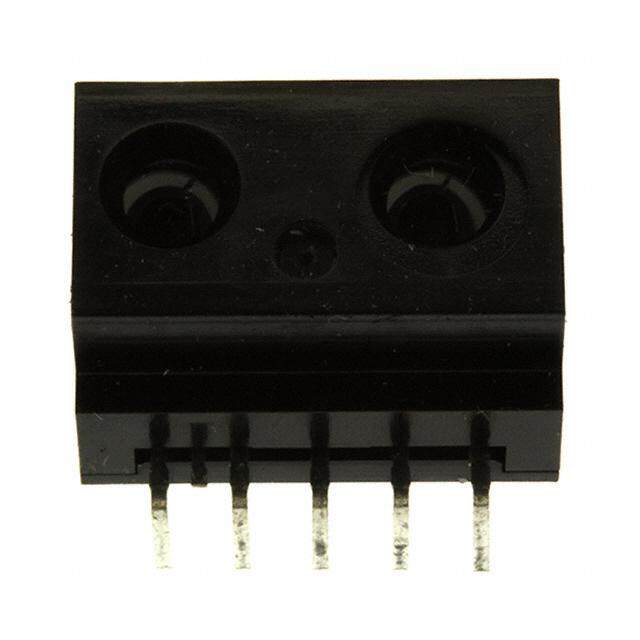
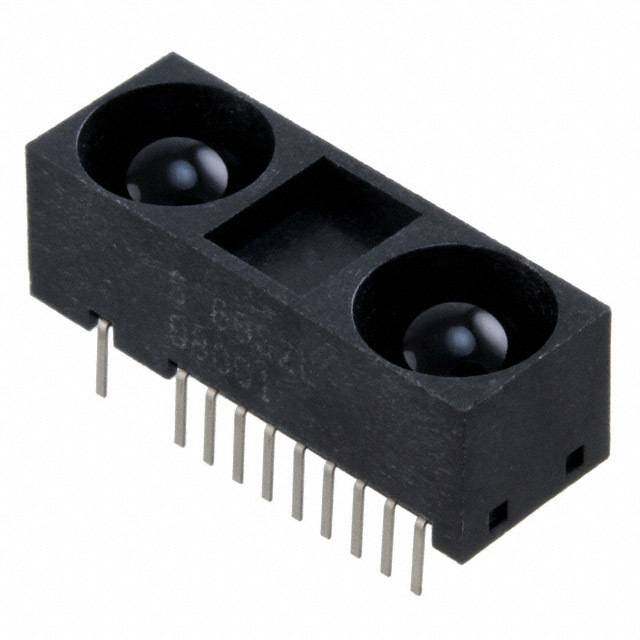
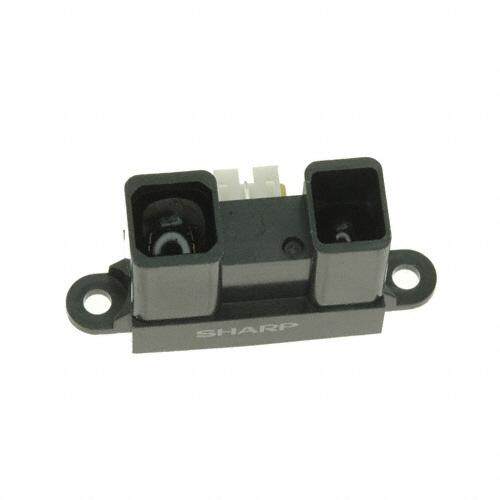
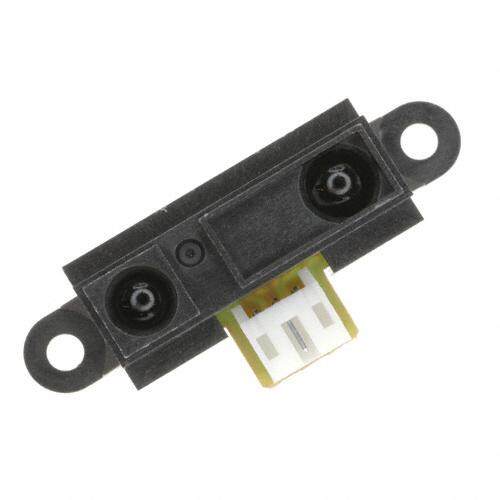
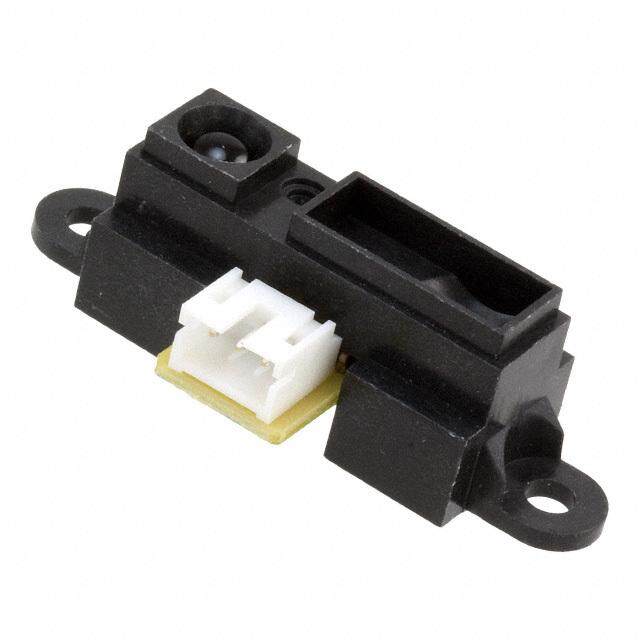
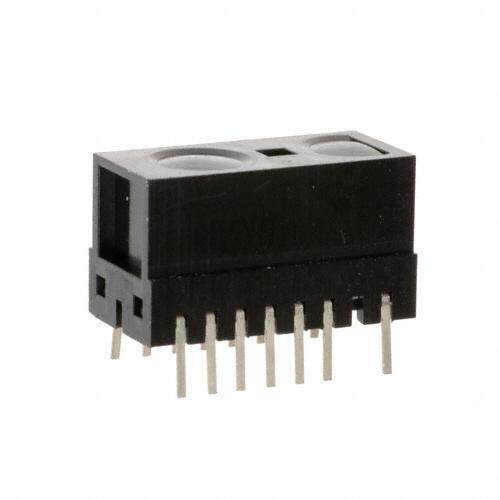

- 商务部:美国ITC正式对集成电路等产品启动337调查
- 曝三星4nm工艺存在良率问题 高通将骁龙8 Gen1或转产台积电
- 太阳诱电将投资9.5亿元在常州建新厂生产MLCC 预计2023年完工
- 英特尔发布欧洲新工厂建设计划 深化IDM 2.0 战略
- 台积电先进制程称霸业界 有大客户加持明年业绩稳了
- 达到5530亿美元!SIA预计今年全球半导体销售额将创下新高
- 英特尔拟将自动驾驶子公司Mobileye上市 估值或超500亿美元
- 三星加码芯片和SET,合并消费电子和移动部门,撤换高东真等 CEO
- 三星电子宣布重大人事变动 还合并消费电子和移动部门
- 海关总署:前11个月进口集成电路产品价值2.52万亿元 增长14.8%



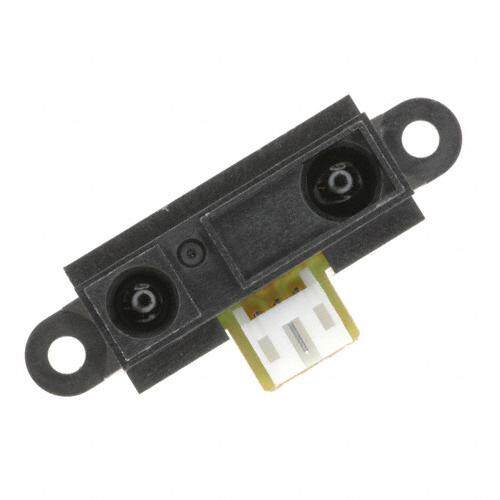


PDF Datasheet 数据手册内容提取
GP2Y0E03 GP2Y0E03 Distance Measuring Sensor Unit Measuring distance : 4 to 50 cm Digital(I 2 C) / Analog output type ■Description ■Agency approvals/Compliance GP2Y0E03 is a distance measuring sensor unit, 1. Compliant with RoHS directive (2002/95/EC) composed of an integrated combination of CMOS image sensor and IR-LED. The variety of the reflectivity of the object, the environmental temperature and the operating duration are not influenced easily to the distance detection because of adopting the triangulation method. ■Applications This device outputs the voltage corresponding to the detection distance and digital(I 2 C) data. 1. Cleaning Robot So this sensor can also be used as a proximity sensor. 2. Human type Robot 3. Touch-less switch (Sanitary equipment, Control of illumination, etc) 4. Sensor for energy saving ■Features (ATM, Copier, LCD monitor, etc) 5. Amusement equipment 1. Infrared LED and CMOS image sensor with (Robot, game machine, etc) built-in signal processing circuit 2. Distance measuring range : 4 to 50 cm 3. Low voltage operation : Min 2.7V 4. Compact size (16.7 × 11.0 × 5.2mm) 5. High-precision measurement 6. Digital(I 2 C) / Analog output type NoticeThe content of data sheet is subject to change without prior notice. In the absence of confirmation by device specification sheets, SHARP takes no responsibility for any defects that may occur in equipment using any SHARP devices shown in catalogs, data books, etc. Contact SHARP in order to obtain the latest device specification sheets before using any SHARP device. Sheet No. : OP13002EN 1
GP2Y0E03 ■Schematic 1uF 1uF 510Ω 1uF 1uF 1uF ① VDD ② Vout(A) ③ GND ④ VIN(IO) ⑤ GPIO1 ⑥ SCL ⑦ SDA 0.1uF 0.1uF Please use an electric source with an output current of 150mA or more because LED pulse current is more than 100mA. ■Outline (Drawing No.CY15117i02) Scale : 5/1 Unit : mm Sheet No. : OP13002EN 2
GP2Y0E03 ■Absolute maximum ratings Ta=25°C (unless otherwise specified) Parameter Symbol Ratings Unit Remark Supply voltage VDD -0.3 to + 5.5 V - Output terminal voltage Vout (A) -0.3 to +2.8 V - Output current Iout (A) -6.0 to +6.0 mA - -0.3 to VDD+0.3 (VDD >= 3.3V) I/O supply voltage VIN (IO) V Refer to 3-4 -0.3 to +3.6 (VDD > 3.3V) Input terminal voltage GPIO1 -0.3 to VIN(IO)+0.3 V Refer to 3-4 I 2 C input terminal voltage SCL -0.3 to VIN(IO)+0.3 V Refer to 3-4 I 2 C I/O terminal voltage SDA -0.3 to VIN(IO)+0.3 V Refer to 3-4 Operating temperature Topr -10 to +60 °C - Storage temperature Tstg -40 to +70 °C - ■Recommended operating conditions Parameter Symbol Rating Unit Remark Supply voltage VDD 2.7 to 5.5 V - I/O supply voltage VIN (IO) 1.8 to 3.3 V - SCL, SDA High level input VIH1 Min. VIN(IO) x 0.7 V - SCL, SDA Low level input VIL1 Max. VIN(IO) x 0.3 V - GPIO1 High level input VIH Min. VIN(IO) x 0.7 V Operating state GPIO1 Low level input VIL Max. VIN(IO) x 0.3 V Stand-by state Sheet No. : OP13002EN 3
GP2Y0E03 ■Electro-optical Characteristics (Ta=25°C, VDD =3V) Parameter Symbol Conditions MIN. TYP. MAX. Unit Measuring distance range L※ (Note 1, 2) 4 - 50 cm Distance value D1 L=50cm (Note 1, 2, 3) 45 50 55 cm Distance value D2 L=10cm (Note 1, 2, 3) 9 10 11 cm Distance value D3 L=4cm (Note 1, 2, 3) 3 4 5 cm Output terminal voltage Vout(A)1 L=50cm (Note 1, 2) 0.3 0.55 0.8 V Output terminal voltage Vout(A)2 L=10cm (Note 1, 2) 1.9 2.0 2.1 V Output terminal voltage Vout(A)3 L=4cm (Note 1,2) 2.1 2.2 2.3 V Average supply current Icc1 L=50cm, GPIO1=VIN(IO) - 26 36 mA Stand-by supply current Icc2 GPIO1=GND - 20 60 μA Response time (Note 4) Ts L=50cm → L=4cm (Note 5) - - 40 ms ※ L : Distance to reflective object (Note 1) Under dark condition (Note 2) Using reflective object : (Note 2) White paper (Made by Japan Color Research Institute order made color chart : mat, reflective ratio : 90%) (Note 3) Distance data through I 2 C bus (Note 4) Max. time means that it takes time to stabilize output due to the change of reflected signal light. (Note 4) Definition : the case that object condition is changed suddenly from the least reflection(max. gain condition in (Note 4) internal circuit) to the most reflection (min. gain condition in internal circuit). (Note 5) Method of measuring (Ts) (Note 4) Connect GPIO1 with GND during measuring L=50cm with reflective object: (Note 4) Gray paper (mat, reflective ratio : 10%). (Note 4) After changing the position (L=4cm with reflective object: White paper (mat, reflective ratio : 90%), (Note 4) Measuring the time of the output terminal : Vout(A) until stabilizing after connecting GPIO1 with VIN(IO) Reflective 10% @50cm 90% @4cm Object GPIO1 50cm 4cm Distance (I 2 C) 2.3[V] (spec max. @4cm) 2.1[V] (spec min. @4cm) Vout(A) Ts (Max 40ms) Response time of I 2 C output is faster than that of Vout(A) because it is stabilized soon after distance data output. Distance data is updated every 2ms after response time. Sheet No. : OP13002EN 4
GP2Y0E03 ■Timing Chart 1. Power On/Off Timing Sequence VDD T1 T4 VIN(IO) T1, T4 : Refer to 2 VIN(IO) should be turned off before VDD is turned off, or at the same time when VDD is turned off. I 2 C communication with other devices connected to the same bus is not allowed after VDD or VIN(IO) is turned off. In case that both of VDD and VIN(IO) turn off, GPIO1, SCL and SDA should be pull low. In case that only VIN(IO) turn off, GPIO1, SCL and SDA should be pull low. If this product is operated under the condition except the above, this product or other device around it may give damage due to excessive current. 2. Active / Stand-by timing sequence There are two ways (Hardware / Software) to control Active/stand-by state. HW : GPIO1 is set High or Low HW : GPIO1=high : Active state HW : GPIO1=Low : Stand-by state SW : I 2 C register program SW : SW control is effective when GPIO1 is high. (1) Controlled by GPIO1 VDD VIN(IO) T1 GPIO1 T2 T3 T3 I 2 C Access Access Register Register State Active Stand-by Active (2) Controlled by I 2 C VDD VIN(IO) GPIO1 T1 T3 Stand-by Active Access I 2 C comman comman Register State Active Stand-by Active T3 Sheet No. : OP13002EN 5
GP2Y0E03 Description Min Max Unit T1 IO power delay after VDD power on 0 5 ms T2 GPIO1 delay after VIN(IO) power on 0 - ms I 2 C access delay after GPIO1 high or T3 500 - us active command completed T4 VIN(IO) leading to VDD power off 0 - us ■Supplements 1. Example of output distance characteristics Example of output distance characteristecs of GP2Y0E03 ] m 60 c [ C 50 2h I g 40 u o hr 30 a t at 20 d e c 10 n e Dist 0 0 10 20 30 40 50 60 Distance to reflective object*1 [cm] Example of output distance characteristics of GP2Y0E03 2.5 2 ] V ) [ 1.5 A ( ut 1 o V 0.5 0 0 10 20 30 40 50 60 Distance to reflective object*1 [cm] *1 : Using reflective object : White paper (reflective ratio : 90%) 2. Example of directional angle of emitting beam 1.1 1 0.9 0.8 e alu 0.7 e v 0.6 ativ 0.5 el 0.4 R 0.3 0.2 0.1 0 -10 -5 0 5 10 Angle [°] Sheet No. : OP13002EN 6
GP2Y0E03 ■Notes [Advice for the optics] ●Lens of this device shall be kept cleanly. There are cases that dust, water or oil and so on deteriorate the characteristics of this device. Please consider in actual application. ●In case that protection cover is set in front of this sensor , the protection cover shall be recommended to use material which doesn’t scatter light and be matt finish. And the protection cover which has the most efficient transmittance at the emitting wavelength range of LED for this product (λ=850nm±70nm). And this protection cover is recommend to be flat. And this protection cover shall be recommended to be parallel to the emitter and detector portion. In case that protection cover is set in front of this sensor, It emits reflected light from this protection cover. If this reflect light reaches in detector portion, the output distance of this product may be changed. The output distance characteristics of this product may be changed with according to material (①) or transmittance (②) or the thickness (③) or the distance between the protection cover and this product (④) or the angle between surface and back (⑤) or the angle between this cover and this sensor(⑥). In case that protection cover is set, please design to consider that this reflective light is minimized. And it shall be effective to put light shield wall between emitting lens and receiving lens as shown in below. Protection cover ③thickness ④Distance Sensor Condition ③thickness ④distance light shield wall No1 1mm 0mm - No2 1mm 1mm nonexistence No3 2mm 0mm - No4 2mm 1mm exisitence【*】 Direct reflective light becomes large as Distance from sensor to protection cover and thickness of this cover become large. In case thickness is 2mm and distance is 1mm, measuring distance is changed shift larger from actual distance than other condition. It shifts can make small by using installation of light shield【*】and compensation function【**】. 【*】Noted for installation of light shield Inner distance between lens of detector and lens of emitter is around 0.6mm (reference). So the width of light shield is recommended to be less than 0.6mm. In case the width of light shield is longer than inner distance, measuring distance is changed by Shield a part of emitter lens or detector lens. Please confirm that there is no problem under the actual equipment. And In case between protection cover and light shield or between light shield and this sensor exists space, The effect of light shield is small because light from emitter leaks. The light shield wall is recommended to use the material that have the low transmittance at the emitting wavelength range of LED for this product (λ=850nm±70nm). When the material of light shield wall is hard, and the power stress in which it is added to this product is large, measuring distance may shift from actual distance. The width of light shield wall Protection Light shield wall Light shield wall cover 【**】Noted of compensation function This product has the function which rectifies error shift by the direct reflective light from protection cover. The accuracy after compensation is based on a protection cover or its installation condition. This function can be active when it set correction factor in this product by I 2 C or E-fuse. Please refer to application manual about the detail of this function. Neither installation of a light shield wall nor use of a compensation function guarantees the distance characteristic. These improve error shift of the distance characteristic. Regardless of use of a light shield wall or a compensation function, please use it after confirming with customer’s product. Sheet No. : OP13002EN 7
GP2Y0E03 [Advice for the characteristics] ●In case that there is an object near to light exits of the sensor between the sensor and the detected object, please use this device after confirming sufficiently what the characteristics of this sensor do not change by the object. ●This product has the function to remove disturbance light by the cancellation function of ambient light, a visible light cut lens, etc. But when the detector receive direct light from the sun, tungsten lamp and so on, there are cases that it can not measure the distance exactly. Please consider the design that the detector does not receive direct light from such light source. When you operate the customer’s set installing this product by the remote control, please consider soft that the output of this product being disregarded at the time of remote control operation by software. ●Distance between sensor and mirror reflector cannot be measured exactly. ●In case that reflective object has boundary line clearly, there is cases that distance can not measure exactly. At that time, if direction of boundary line and the line between emitter center and detector center are parallels, it is possible to decrease deviation of measuring distance. (×) (〇) sensor board (Incorrect) (Correct) ●In order to decrease measuring error due to moving direction of object, we recommend to mount the sensor like below drawing. (Incorrect) (Correct) (×) (〇) (Moving direction) (Moving direction) ●For satisfying the specification of the electro optical characteristic, it is necessary to install a flat surface of object in vertical of emitted light, and it is necessary to reflect the whole emitted light as shown in the following figure. As shown in the example of directional angle of emitting beam, The angle is around 6 ° (±3°) where emission becomes 10% of peaks. The object needs to exist in whole around 10 degrees (±5 degrees) area including the variation of peak position. For example, when the object is in 50 cm, it is necessary to install the object of at least 9cm diameter parallel to the surface of this sensor as follows. However above example doesn’t guarantee specification, please use it after confirming with customer’s product. object (Example : R=90%, matt) 6 ° 9cm sensor 5° 50cm [Notes on handling] ●Please don’t do washing. Washing may deteriorate the characteristics of optical system and so on. Please confirm resistance to chemicals under the actual usage since this product has not been designed against washing. ●Please use this product under the condition that applied stress to the connector below 0.49N. And, harness is pulled in the state where it attached this sensor, or please be careful so that the stress more than the above may not be added to this sensor. ●This product have the parts that mount to the substrate by soldering . Since there is a possibility that a solder mounting part may break when this product is used, the stress more than 4.9N should not be added to this product. Sheet No. : OP13002EN 8
GP2Y0E03 ■Compliance with each regulation 1. The RoHS directive(2002/95/EC) This product complies with the RoHS directive(2002/95/EC) . Object substances: mercury, lead (except for lead in high melting temperature type solders and glass of electronic components), cadmium, hexavalent chromium, polybrominated biphenyls (PBB) and polybrominated diphenyl ethers (PBDE) 2. Content of six substances specified in Management Methods for Control of Pollution Caused by Electronic Information Products Regulation (Chinese : 电子信息产品污染控制管理办法). Toxic and hazardous substances Hexavalent Polybrominated Polybrominated Category Lead Mercury Cadmium chromium biphenyls diphenyl ethers (Pb) (Hg) (Cd) (Cr6+) (PBB) (PBDE) Distance measuring ✓ ✓ ✓ ✓ ✓ ✓ sensor ✓: indicates that the content of the toxic and hazardous substance in all the homogeneous materials of the part is below the concentration limit requirement as described in SJ/T 11363-2006 standard . Sheet No. : OP13002EN 9
GP2Y0E03 ■Packing specification (Drawing No. CY15118i09) Pads (11 pieces) Product Tray 10 sheets of tray Packing case Indication side. (1) Packing number Max 100 pieces per tray Max 1000 pieces per case (2) Close the lid of case and seals with craft tape, and fill in the blanks of Model No., quantity and date. (3) Outside : 264 x 203 x 105 (mm) (4) Indication The content of the indication conforms to EIAJ C-3 and the following items are indicated. Model No., Internal production control name, Quantity, Packing date, Corporate name, Country of origin Sheet No. : OP13002EN 10
GP2Y0E03 ■Important Notices · The circuit application examples in this publication are with equipment that requires higher reliability such as: provided to explain representative applications of --- Transportation control and safety equipment (i.e., SHARP devices and are not intended to guarantee any circuit aircraft, trains, automobiles, etc.) design or license any intellectual property rights. SHARP --- Traffic signals takes no responsibility for any problems related to any --- Gas leakage sensor breakers intellectual property right of a third party resulting from the --- Alarm equipment use of SHARP's devices. --- Various safety devices, etc. (iii) SHARP devices shall not be used for or in · Contact SHARP in order to obtain the latest device speci- connection with equipment that requires an extremely fication sheets before using any SHARP device. SHARP high level of reliability and safety such as: reserves the right to make changes in the specifica- --- Space applications tions, characteristics, data, materials, structure, and --- Telecommunication equipment [trunk lines] other contents described herein at any time without --- Nuclear power control equipment notice in order to improve design or reliability. Manu- --- Medical and other life support equipment (e.g., facturing locations are also subject to change without notice. scuba). · Observe the following points when using any devices in · If the SHARP devices listed in this publication fall this publication. SHARP takes no responsibility for within the scope of strategic products described in the damage caused by improper use of the devices which does Foreign Exchange and Foreign Trade Law of Japan, it is not meet the conditions and absolute maximum ratings to be necessary to obtain approval to export such SHARP used specified in the relevant specification sheet nor meet the devices. following conditions: (i) The devices in this publication are designed for use in · This publication is the proprietary product of SHARP general electronic equipment designs such as: and is copyrighted, with all rights reserved. Under the --- Personal computers copyright laws, no part of this publication may be --- Office automation equipment reproduced or transmitted in any form or by any --- Telecommunication equipment [terminal] means, electronic or mechanical, for any purpose, in --- Test and measurement equipment whole or in part, without the express written permission of --- Industrial control SHARP. Express written permission is also required --- Audio visual equipment before any use of this publication may be made by a --- Consumer electronics third party. (ii) Measures such as fail-safe function and redundant design should be taken to ensure reliability and safety when · Contact and consult with a SHARP representative if SHARP devices are used for or in connection there are any questions about the contents of this publication. Sheet No. : OP13002EN 11
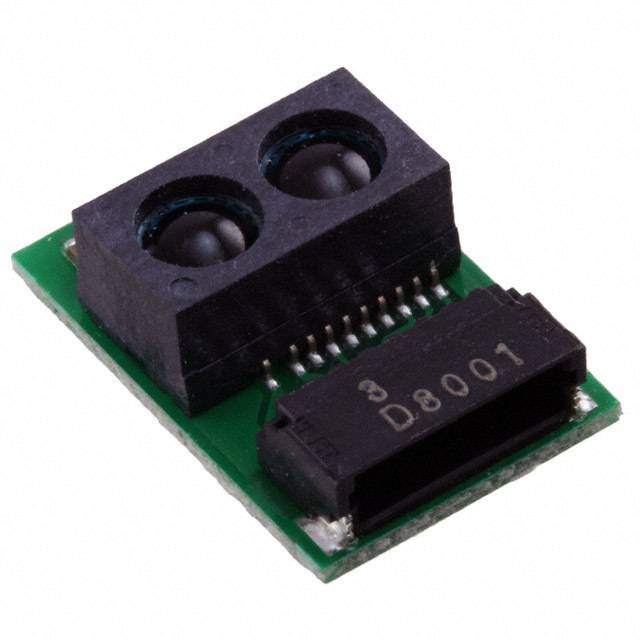
 Datasheet下载
Datasheet下载
